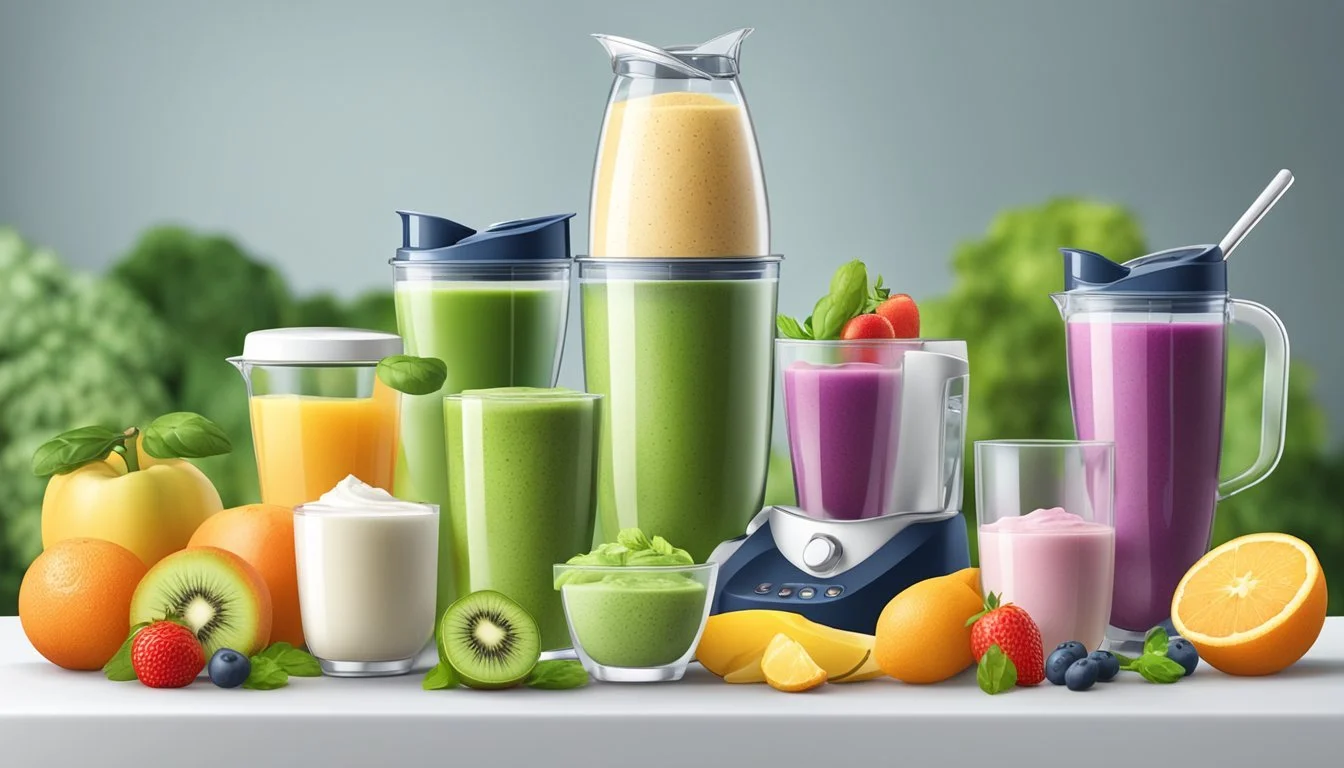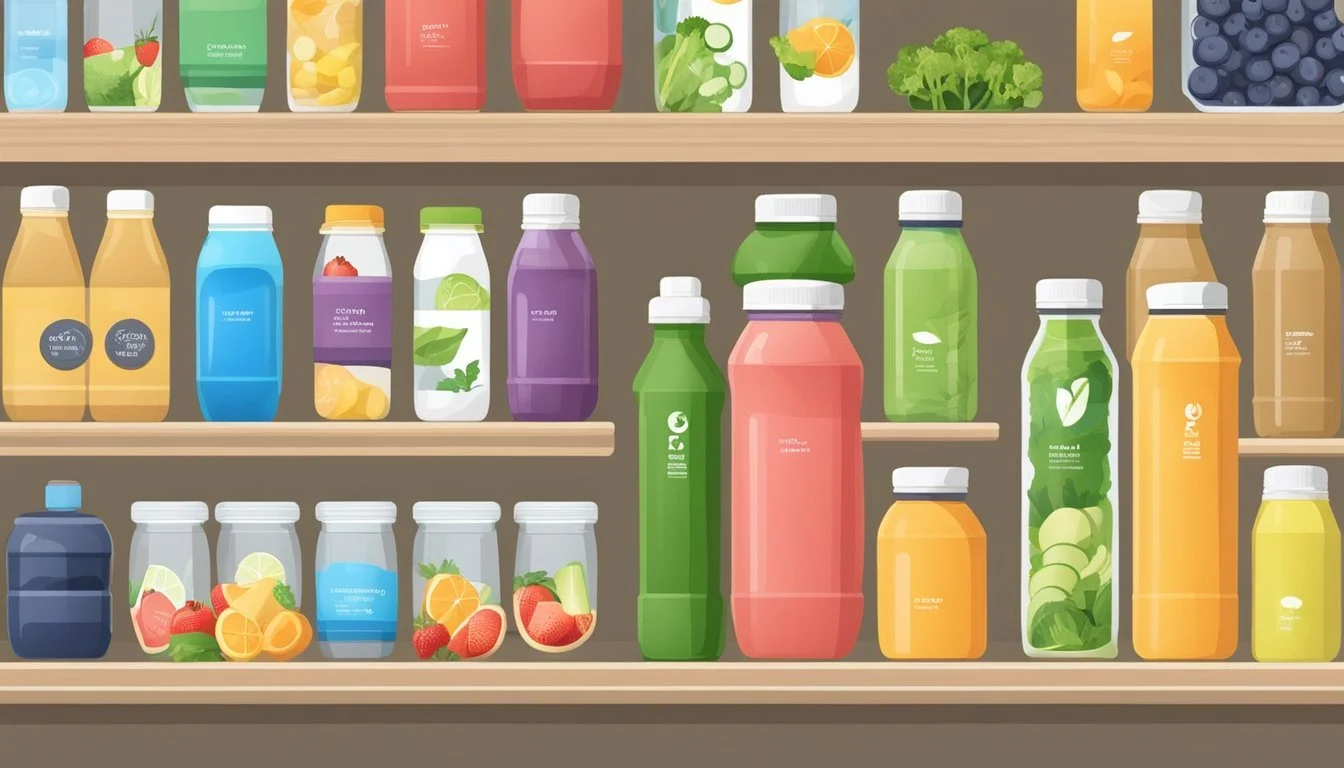Are Meal Replacement Shakes a Healthy Way to Lose Weight?
Unpacking the Nutritional Impact
Meal replacement shakes have become a staple in the weight management arena, touted for their convenience and potential to help individuals control their calorie intake. They are often marketed as nutritionally balanced solutions designed to assist in weight loss by substituting a full meal with a controlled amount of calories, vitamins, and minerals. While some studies suggest that these shakes can be effective for short-term weight loss—owing to their ability to provide a quick, low-calorie meal with essential nutrients—the long-term benefits and potential drawbacks are a topic of ongoing discussion among health experts.
One of the critical factors in using meal replacement shakes for weight loss is the ability to maintain a calorie deficit over time. This deficit occurs when the body uses more energy than it receives from food, leading to weight loss. Meal replacements can make calorie counting simpler, as they provide a precise number of calories per serving, and they may help reduce the temptation to eat high-calorie foods. However, it’s important to select shakes that have a balanced nutrient profile, including an adequate amount of protein, fiber, and essential vitamins and minerals to ensure that the body's nutritional needs are met.
Understanding Meal Replacement Shakes
Meal replacement shakes are designed to provide a balance of nutrients, calories, and satiety in a convenient form. They serve as substitutes for whole meals but should complement a diversified diet.
Nutritional Composition
Meal replacement shakes generally contain a spectrum of macro and micronutrients that are key to a balanced diet. They often have a high protein content, essential for maintaining muscle mass and promoting a feeling of fullness. Fiber is another important component, which aids in digestion and helps stabilize blood sugar levels.
Typically, these shakes also include a blend of vitamins and minerals that are crucial for various bodily functions. The caloric content of meal replacement shakes can vary, but they are intended to be sufficient for a meal's worth of energy while still enabling weight control when consumed in place of higher-calorie meals.
Nutrients Purpose in Meal Replacements Protein Supports muscle health and satiety Fiber Aids digestion and blood sugar stabilization Vitamins Essential for various bodily functions Minerals Required for metabolic processes Calories Provides a controlled amount of energy
Different Types of Shakes
Meal replacement shakes come in various forms, each tailored to different dietary needs and goals. Some shakes emphasize the presence of natural ingredients and the exclusion of artificial additives. Others might cater specifically to athletes with higher protein and calorie requirements.
Furthermore, certain shakes are crafted for those with specific dietary restrictions, such as lactose intolerance or gluten sensitivity; these usually are clearly labeled to inform consumers. Additionally, some shakes are enriched with superfoods or additional nutrients to support overall health and wellness.
Standard Shakes: Balanced nutrient profile for general use.
Athletic Shakes: Higher in protein and calories to support active lifestyles.
Specialized Shakes: Formulated for specific dietary needs and restrictions.
Meal replacement shakes can serve as a practical nutrition solution for those looking to manage their weight or needing a convenient meal option. However, individuals should carefully examine the labels to ensure the shake fits into their overall dietary plan and consult with healthcare professionals as necessary.
Role of Shakes in Weight Loss
Meal replacement shakes can be instrumental in a weight loss journey owing to their ability to manage calorie intake and enhance satiety.
Caloric Deficit and Weight Management
A fundamental aspect of weight loss is creating a caloric deficit, where the body expends more energy than it consumes. Meal replacement shakes typically provide a low-calorie yet nutritionally balanced alternative to traditional meals, contributing to this deficit. By replacing a high-calorie meal with a controlled portion shake, one effectively reduces overall calorie intake which is essential for fat loss.
Example Shake Caloric Content:
Calories: 200-400
Protein: High
Carbohydrates: Moderate
Fats: Low
The integration of meal replacement shakes in a healthy diet should be designed to not only reduce calories but also to supply essential nutrients the body needs for overall health.
Satiety and Hunger Control
Protein intake is crucial for promoting satiety, the feeling of fullness, which helps control hunger levels between meals. Many meal replacement shakes are high in protein, which has been shown to lead to greater satiety. This makes them a practical tool in hunger management, helping individuals stay on track with their diet plans.
Nutritional Components Affecting Satiety:
Protein: Essential for prolonged satiety
Fiber: Aids in digestive health and enhances fullness
While meal replacement shakes can assist in controlling calorie intake and extending feelings of fullness, they should be recognized as part of a broader weight management strategy. For sustainable weight loss and maintenance of body fat reduction, shakes must be complemented by other healthy foods and regular physical activity. Furthermore, for long-term success, individuals should consider them a component of a varied diet rather than a stand-alone, long-term solution.
Health Considerations
When considering meal replacement shakes as part of a weight loss strategy, it is crucial to examine their nutritional content and how they can affect overall health.
Sugar and Added Ingredients
Meal replacement shakes often contain added sugars which can negatively impact blood sugar levels, particularly for individuals with diabetes. It's important to read labels carefully and choose shakes with minimal added sugars. Some shakes may also contain a variety of non-nutritive sweeteners and artificial flavors which might be less desirable for those seeking whole food nutrition.
Vitamins and Minerals Balance
A well-designed meal replacement shake offers a spectrum of essential vitamins and minerals to support healthy body function. Look for shakes that provide a balance of nutrients close to that of whole foods, ensuring adequate levels of nutrients such as calcium, potassium, and iron, which are vital for bone health, blood pressure regulation, and oxygen transport, respectively. They should ideally contain antioxidants and phytochemicals, which can be found abundantly in natural fruits and vegetables, to protect the body’s tissues from oxidative stress.
Special Dietary Needs
Individuals with unique dietary requirements must select meal replacement shakes that cater to their needs. For those needing added fiber, options that include added fiber to help one stay full longer are available. Those who require a gluten-free, low-FODMAP, or allergen-specific diet should verify that their meal replacement shake complies with these stipulations. Additionally, incorporating healthful foods, such as fresh fruits and vegetables, alongside meal replacements, can contribute to a healthy diet.
Pros and Cons of Meal Replacements
While meal replacement shakes offer a quick and convenient way to control calorie intake, they should be balanced with whole foods for overall health. Their simplicity for on-the-go nutrition must be weighed against dietary variety and potential nutrient limitations.
Advantages
Convenience: Meal replacements are portable and can be consumed quickly, making them an ideal on-the-go meal solution for busy lifestyles or when traveling.
Calorie Control: They provide a defined number of calories per serving, which can facilitate easier calorie tracking for weight loss.
Disadvantages
Nutritional Completeness: Although meal replacements can provide essential nutrients, they may lack the full range of nutrition found in whole foods.
Variety and Satisfaction: Reliance on shakes may lead to boredom due to lack of variety, and they might not provide the same level of satiety as solid foods, potentially leading to overeating later.
Comparing Alternatives
In assessing meal replacement shakes against other dietary options, one must scrutinize nutritional quality and potential health outcomes. This section dissects the fundamental differences between consuming whole foods versus shakes and other supplemental foods like protein powders and nutrient-dense snacks.
Whole Foods vs. Shakes
Whole foods, including meat, eggs, beans, whole grains, fruits, and vegetables, provide a broad spectrum of nutrients beyond merely calories and protein, which are often the focus of meal replacement shakes. The fiber content in whole grains, beans, and produce aids digestion and can enhance satiety, a factor that shakes may fall short on. Regular meals consisting of a balance of proteins, fats, and carbohydrates from whole foods are typically more satisfying and nutritionally diverse compared to shakes. However, shakes have the advantage of being portion-controlled and may support weight loss when used as part of a calorie-restricted diet.
Whole Food Benefits:
Rich in dietary fiber
Greater nutritional variety
Typically more satiating
Meal Replacement Shakes Pros:
Convenient and easy to prepare
Portion control
Specified calorie content
Other Supplemental Foods
Supplemental foods like protein powders, Greek yogurt, nuts, seeds, and soups can also be included in a weight loss strategy, often with benefits overlapping those of meal replacement shakes. Greek yogurt is a good source of dairy-based protein and can be more satiating than a liquid shake. Nuts and seeds offer healthy oils and can be more filling due to their fat and fiber content. While protein powders can supplement dietary protein intake, they lack other essential nutrients found in whole foods. Portion-controlled meals involving these foods can offer more tactile eating experiences than shakes, which may lead to increased feelings of fullness and satisfaction.
Supplemental Food Advantages:
Greek yogurt: Probiotics, dairy-based protein
Nuts/Seeds: Healthy fats, fiber
Soups: Can be nutrient-dense, lower in calories
Meal Replacement Shakes Considerations:
May lack variety of micronutrients
Often liquid, which may not be as filling as solid food
Best Practices for Using Shakes
When utilizing meal replacement shakes for weight loss, it's crucial to select the right shake and integrate it into your diet appropriately. Making informed choices can lead to more sustainable and health-conscious weight management.
Choosing the Right Shake
Nutrient Balance: A shake should contain a balance of nutrients. Registered dietitians and nutritionists often recommend shakes with 15 to 25 grams of carbohydrates and a protein content appropriate to support muscle mass, usually around 20 to 30 grams of protein per serving. The best protein powder used in meal replacement shakes should also offer a comprehensive amino acid profile.
Flavor and Serving Size: Flavor is personal; choose one that you can enjoy consistently. The serving size is equally important — a portion-controlled shake ensures you ingest an optimal number of calories.
Additional Nutritional Value: Look for shakes fortified with vitamins and minerals to complement your diet. Some of the best meal replacement shakes also include dietary fiber, which is beneficial for digestion and helps create a feeling of fullness.
Incorporating Shakes into a Diet
Substitution Strategy: Meal replacement shakes should be used to replace one or two full meals per day. This can help create a calorie deficit which is essential for weight loss. However, it's important to maintain a balanced diet with whole foods for the other meals to ensure comprehensive nutrition.
Expert Guidance: Consulting with a registered dietitian can help tailor shake selection to individual dietary needs. Like a support group, these experts can provide encouragement and advice on making the most of meal replacement shakes within a diet plan.
Consistency and Exercise: Consistently incorporating shakes into your diet, coupled with regular physical activity, supports muscle maintenance and weight loss. Always ensure that the rest of your diet complements this approach to maintain overall health and muscle mass.
Potential Risks and Warnings
While meal replacement shakes may offer convenience for weight loss, they come with potential risks and nutritional shortcomings. Understanding these can help users make informed decisions about incorporating shakes into their diets.
Over-reliance and Nutrient Deficiency
An over-reliance on meal replacement shakes can lead to nutrient deficiencies. These products are often low in calories, which can aid in creating a calorie deficit for weight loss. However, they may not always provide all the essential nutrients, vitamins, and fats required for a balanced diet. Replacing whole foods with shakes on a regular basis can result in missing out on the benefits of a diverse diet, including fiber and antioxidants found in whole fruits, vegetables, and grains.
Nutrients potentially lacking in meal replacement shakes:
Fiber
Antioxidants
Phytonutrients from whole fruits and vegetables
Medical and Health Warnings
Meal replacement shakes might not suit everyone. Certain artificial ingredients or allergens in shakes may pose health risks to some individuals. Moreover, shakes with high levels of added sugars can lead to increased calorie intake and undercut weight loss efforts. It's important for consumers to review the product label and consult with a registered dietitian before starting any meal replacement regimen, especially individuals with health conditions that require diet monitoring.
Key medical considerations:
Check for added sugars: high levels can be counterproductive for weight loss.
Be aware of artificial ingredients that may cause adverse reactions.
Monitor calorie intake: too low can result in health issues, too high can hamper weight loss.
Consult with healthcare professionals if there are underlying health conditions.
Demographic Considerations
When considering the role of meal replacement shakes in weight loss, it is important to acknowledge that nutritional needs can vary significantly across gender and age demographics. These variances affect the efficacy and healthiness of meal replacement shakes for individuals looking to lose weight.
Gender-Specific Nutrition
Men and women typically require different nutrient profiles for optimal health. Women, for example, often need additional iron due to menstrual blood loss, and may therefore benefit from meal replacement shakes that are fortified with this micronutrient. Additionally, women generally require fewer calories per day than men, so a meal replacement shake with a lower calorie content may be preferable for women looking to lose weight.
On the other hand, men often need a higher intake of calories and grams of protein to maintain muscle mass and ensure a healthy diet. Consequently, meal replacement shakes geared towards men might have higher protein content and a tailored balance of carbs to support their nutritional needs.
Age and Activity Levels
The elderly often have different nutritional needs than younger adults. They may require shakes with higher vitamin D and calcium content to support bone health, alongside an appropriate amount of fiber to aid in digestion. In the context of weight loss, ensuring that shakes provide sufficient protein is crucial to maintain muscle mass, which tends to decline with age.
For people with high activity levels, regardless of age, meal replacement shakes need to provide enough energy—in the form of calories—and nutrients to fuel their active lifestyle. Shakes intended for this demographic should focus on not just aiding in weight loss, but also on supporting a healthy and active lifestyle. This includes having a balanced intake of vitamins, minerals, and other micronutrients, as well as being convenient for those with a busier schedule.
Sustainability and Longevity
Meal replacement shakes offer a convenient option for those aiming to lose weight, especially for individuals with fast-paced lifestyles or during travel when preparing healthful foods may not be feasible. They provide a pre-measured, portion-controlled meal that is often fortified with essential vitamins and minerals, which can help dieters meet their nutrient needs without the time investment required to prepare multiple healthy meals(1).
However, their suitability as a long-term solution for weight management is a subject for debate. While meal replacement shakes can make it easier for consumers to control their calorie intake and might help them to feel full longer, relying solely on these products can be unsustainable over time. They are typically less satisfying than whole foods, which can impact long-term adherence and success.
Integrating meal replacement shakes as part of a balanced diet, rather than as a stand-in for all meals, may be more sustainable. They are best used when paired with other healthy diet practices, like consuming a variety of whole foods—fruits, vegetables, lean proteins, and whole grains—which also supply fiber and health-promoting phytochemicals that shakes might lack.
In conclusion, while meal replacement shakes are a convenient and fast way to nourish the body and can aid in weight loss, they do not replace the broad spectrum of nutrients provided by a healthy, balanced diet. For long-term health and sustainability, they should be thought of as a tool, rather than a complete solution.
Orgain, “Meal Replacement Powder”, CNET Review







